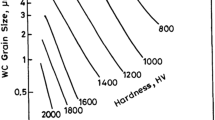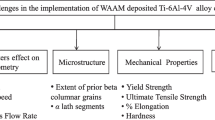Abstract
During high pressure die casting (HPDC), molten metal is injected into the tool cavity where it reaches high velocities that cause substantial wear of the tool components. In order to mitigate this problem, different surface treatments are sometimes employed for high production tools. The most common treatments are nitriding and physical vapor deposition (PVD) of hard coatings. Within this study, effectiveness of two duplex PVD hard coatings, CrN and TiAlN, was tested on core pins, which are the most endangered elements of high pressure die casting tools. Core pins were tested in four industrial production runs of an automotive component. In every run, the tool was mounted with one pin that was PVD-coated, and one that was gas-nitrided. Nitrided core pins were used as a base standard since the nitriding is the most commonly used surface treatment. TiAlN-coated pins were able to complete a full production run of 22,000 shots without significant damage. CrN coating showed somewhat higher soldering tendency and erosion rates. Considering that the untreated core pins were able to withstand only 5500 shots, it can be concluded that duplex PVD coatings can significantly improve tool lifetime. Additionally, results indicate that often disregarded variances in casting temperature or in cleanliness of ingots used in production can significantly influence wear performance of HPDC tools. Analysis of the production costs has shown that the application of duplex TiAlN coating on the core pins can lead to significant savings for tested automotive components.









Similar content being viewed by others
References
Persson A (2003) On tool failure in die casting. Ph.D thesis, Uppsala University
Concer D, Marcondes PVP (2017) Experimental and numerical simulation study of porosity on high-pressure aluminum die casting process. J Braz Soc Mech Sci Eng 39:3079–3088. https://doi.org/10.1007/s40430-016-0672-x
Schwam D (2012) Final technical report: improved die casting process to preserve the life of the inserts
Tušek J, Taljat B, Klobčar D (2007) How to extend the life of die-casting tools. Metalurgija 46:64–71
Herman A (2012) The rationalization of automatic units for hpdc technology. Arch Foundry Eng. https://doi.org/10.2478/v10266-012-0031-z
Terek P, Kovačević L, Miletić A et al (2016) Effects of die core treatments and surface finishes on the sticking and galling tendency of Al–Si alloy casting during ejection. Wear 356–357:122–134. https://doi.org/10.1016/j.wear.2016.03.016
Srivastava A, Joshi V, Shivpuri R et al (2003) A multilayer coating architecture to reduce heat checking of die surfaces. Surf Coat Technol 163–164:631–636. https://doi.org/10.1016/S0257-8972(02)00690-4
Dingremont N, Bergmann E, Collignon P (1995) Application of duplex coatings for metal injection moulding. Surf Coat Technol 72:157–162. https://doi.org/10.1016/0257-8972(94)02340-9
Mitterer C, Holler F, Üstel F, Heim D (2000) Application of hard coatings in aluminium die casting—soldering, erosion and thermal fatigue behaviour. Surf Coat Technol 125:233–239. https://doi.org/10.1016/S0257-8972(99)00557-5
Lin J, Carrera S, Kunrath AO et al (2006) Design methodology for optimized die coatings: the case for aluminum pressure die-casting. Surf Coat Technol 201:2930–2941. https://doi.org/10.1016/j.surfcoat.2006.06.024
Terek P (2016) Application of surface engineering technologies for improvement of diecasting tools quality. University of Novi Sad, Serbia
Oliver WC, Pharr GM (1992) An improved technique for determining hardness and elastic modulus using load and displacement sensing indentation experiments. J Mater Res 7:1564–1583. https://doi.org/10.1557/JMR.1992.1564
Bobzin K, Brögelmann T, Hartmann U, Kruppe NC (2016) Analysis of CrN/AlN/Al2O3 and two industrially used coatings deposited on die casting cores after application in an aluminum die casting machine. Surf Coat Technol 308:374–382. https://doi.org/10.1016/j.surfcoat.2016.09.040
Chen Z, Jahedi M (1999) Die erosion and its effect on soldering formation in high pressure die casting of aluminium alloys. Mater Des 20:303–309. https://doi.org/10.1016/S0261-3069(99)00035-7
Gopal S, Lakare A, Shivpuri R (1999) Evaluation of thin film coatings for erosive–corrosive wear prevention in die casting dies. Surf Eng 15:297–300. https://doi.org/10.1179/026708499101516632
Nunes V, Silva FJG, Andrade MF et al (2017) Increasing the lifespan of high-pressure die cast molds subjected to severe wear. Surf Coat Technol 332:319–331. https://doi.org/10.1016/j.surfcoat.2017.05.098
Kimura A, Kawate M, Hasegawa H, Suzuki T (2003) Anisotropic lattice expansion and shrinkage of hexagonal TiAlN and CrAlN films. Surf Coat Technol 169–170:367–370. https://doi.org/10.1016/S0257-8972(03)00040-9
Venkatesan K, Shivpuri R (1995) Experimental and numerical investigation of the effect of process parameters on the erosive wear of die casting dies. J Mater Eng Perform 4:166–174. https://doi.org/10.1007/BF02664110
Wang Y, Li H-T, Fan Z (2012) Oxidation of aluminium alloy melts and inoculation by oxide particles. Trans Indian Inst Met 65:653–661. https://doi.org/10.1007/s12666-012-0194-x
Vonica D, Moldovan P, Stanica C et al (2013) Investigations of the nature of non-metallic inclusions in Al-Mg-Mn alloys. UPB Sci Bull Ser B Chem Mater Sci 75:199–208
Campbell J (2011) Complete casting handbook: metal casting processes, techniques and design. Elsevier Butterworth-Heinemann, Oxford
Mi J, Harding RA, Campbell J (2004) Effects of the entrained surface film on the reliability of castings. Metall Mater Trans A 35:2893–2902. https://doi.org/10.1007/s11661-004-0237-y
Leyland A, Matthews A (2000) On the significance of the H/E ratio in wear control: a nanocomposite coating approach to optimised tribological behaviour. Wear 246:1–11. https://doi.org/10.1016/S0043-1648(00)00488-9
Deng J, Wu F, Lian Y et al (2012) Erosion wear of CrN, TiN, CrAlN, and TiAlN PVD nitride coatings. Int J Refract Met Hard Mater 35:10–16. https://doi.org/10.1016/j.ijrmhm.2012.03.002
Okladnikova NV, Uskova AL, Drozdova TN et al (2015) Studies of the effect of nonmetallic inclusions and refining of melt on the quality of ingots and shapes from alloy AD31. Met Sci Heat Treat 57:69–73. https://doi.org/10.1007/s11041-015-9837-y
Acknowledgements
The authors gratefully acknowledge the financial support provided by the Provincial Secretariat for Higher Education and Scientific Research of the Autonomous Province of Vojvodina, Republic of Serbia and by Slovenian Research Agency (ARRS).
Author information
Authors and Affiliations
Corresponding author
Additional information
Technical Editor: Márcio Bacci da Silva.
Rights and permissions
About this article
Cite this article
Kovačević, L., Terek, P., Miletić, A. et al. Industrial evaluation of duplex PVD hard coatings for HPDC. J Braz. Soc. Mech. Sci. Eng. 40, 271 (2018). https://doi.org/10.1007/s40430-018-1190-9
Received:
Accepted:
Published:
DOI: https://doi.org/10.1007/s40430-018-1190-9




